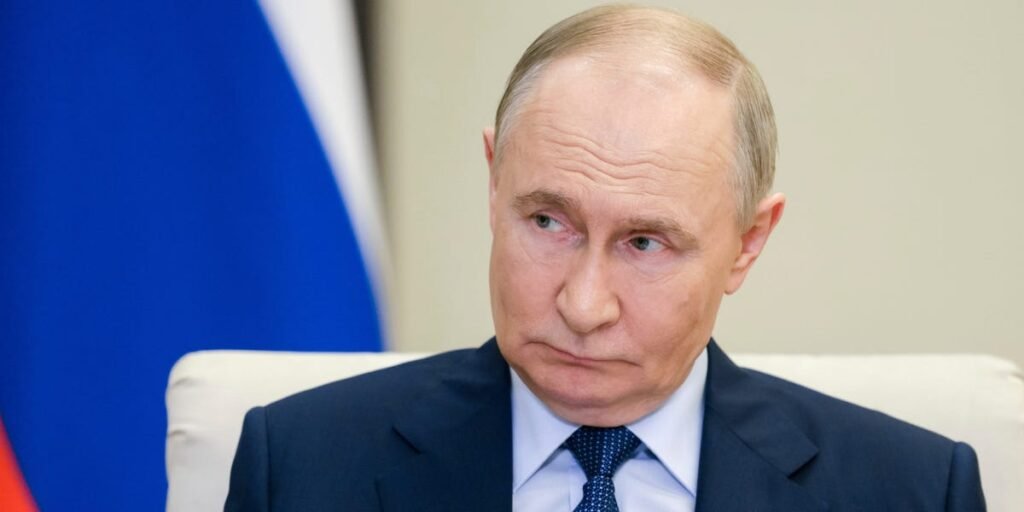Russia may be getting its spiraling inflation under control, but it comes at a growing economic cost, according to a think tank.
“Current inflationary pressures, including underlying ones, are declining faster than previously forecast,” Russia’s central bank said last month.
Russia’s inflation fell from 8.2% in the first quarter to 4.8% in the second quarter, prompting its central bank to lower its key interest rate from 20% to 18%.
“The economy continues to return to a balanced growth path,” the central bank added.
That phrase is just “a euphemism for anemic growth,” wrote Alexander Kolyandr, a senior fellow at the Center for European Policy Analysis, on Thursday.
The Bank of Russia expects Russia’s economy to grow 1% to 2% this year. Meanwhile, the International Monetary Fund expects growth of 0.9%.
Russia’s central bank projects the key interest rate to average between 18.8% and 19.6% this year and fall to 12% to 13% next year — a shift from aggressive interest-rate hikes from mid-2023 to tame an overheating war-fueled economy.
Such high rates were effective at cooling prices. But they have also made borrowing more expensive and dampened both consumer demand and business investment.
Since its full-scale invasion of Ukraine triggered sweeping Western sanctions, Russia has kept its economy afloat through massive defense spending and revenue from oil and gas exports. But that momentum may be running out.
Growth stalls as manufacturing contracts and momentum fades
The country’s GDP grew just 1.4% in the first quarter — a sharp slowdown from the previous quarter.
In July, Russia’s manufacturing sector posted its steepest contraction in three years, according to S&P Global’s Purchasing Managers’ Index.
“Weak client demand and financial difficulties at customers” weighed on output and new orders, wrote S&P Global. Business confidence was the lowest in three years.
The slowdown in manufacturing suggests Russia’s wartime economy may be losing momentum, adding pressure on policymakers to strike a delicate balance.
“For the Kremlin, a brief period of low growth is tolerable, though combined with lower oil prices, it would reduce fiscal revenues,” CEPA’s Kolyandr wrote.
“The main gamble is that the cooling of the economy won’t trigger a prolonged recession,” he added.
Russia’s central bank now finds itself walking a tightrope: keeping inflation in check while avoiding a deeper downturn. Continued wartime spending could easily reignite inflation, but pulling back could deepen the slowdown, especially as foreign investment remains scarce and consumer confidence weak.
Meanwhile, President Donald Trump is putting pressure on Russia to end its war with Ukraine with new penalties, including secondary tariffs.
Last week, Trump announced a 25% tariff on India and a “penalty” for its purchases of Russian oil.
Read the full article here



